|
 Bandhavgarh
Bandhavgarh
|
|
|
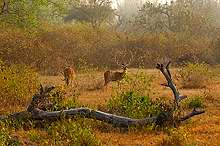 Bandipur Bandipur
|
|
|
 Corbett Corbett
|
|
|
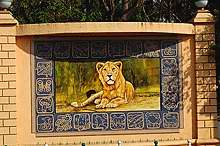 Gir Gir
|
|
|
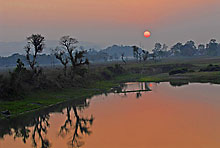 Kaziranga Kaziranga
|
|
|
|
|
|
|
|
|
|
|
 Kanha Kanha
|
|
|
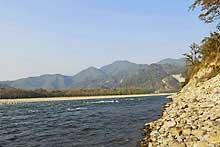 Manas Manas
|
|
|
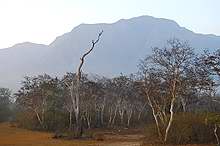 Mudumalai Mudumalai
|
|
|
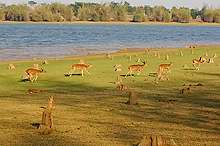 Nagarhole Nagarhole
|
|
|
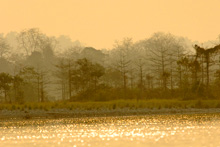 Nameri Nameri
|
|
|
|
|
|
|
|
|
|
|
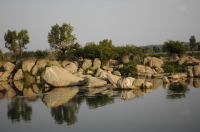 Panna Panna
|
|
|
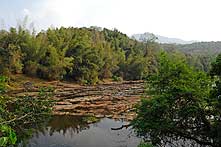 Parambikulam Parambikulam
|
|
|
 Pench Pench
|
|
|
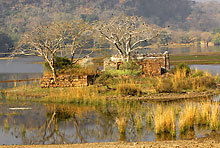 Ranthambore Ranthambore
|
|
|
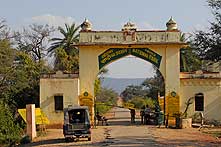 Sariska Sariska
|
|
|
|
|
|
|
|
|
|
|
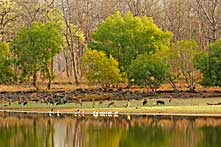 Tadoba Tadoba
|
|
|
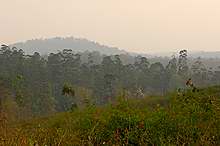 Wyanad (WS) Wyanad (WS)
|
|
|
|
|
|
|
|
|
|
|
|
The parks, reserves and sanctuaries presented are those which I visited several times.
Certain reserves with a high number of tigers, can offer few chances of meetings.
(savage animals, density of the vegetation, size of the park)
Contrary, certain places with less tigers offer more possibilities of vision.
These parks accustomed the tigers to the presence human, and it is possible to approach them closely.
Attention, they really remain wild animals .
|
|
|
|
|
This park, located at the borders of the Vindhya mounts, in the state of Madhya Pradesh, was formerly a reserve of hunting, pertaining to the Maharajah de Rewa.
It is here that in 1951, the last white tiger was captured, fore-mentioned Mohan, from which the hundred results from specimens populating the zoos of the whole world.
|
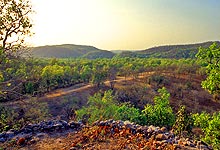 |
|
This reserve was declared national park in 1980, then its surface was extended by adding zones forest peripherals.
Lastly, it becomes Tiger Reserve in 1993 and
take part thus in Project Tiger.
Its surface is of 1162 km2 including 694 km2 for the surface principal (including Tala, Panpatha, Magdhi, Kallwah and Khitauli).
|
The tourist zone, “Tala”, cover 105 km2.
Bandhavgarh contains historical vestiges including one fort which overhangs rocky hills,
forests of sals, bamboos, and meadows.
Below the citadel is a statue of Vishnu, which is the subject of pélerinages on behalf of inhabitants of the area.
|
|
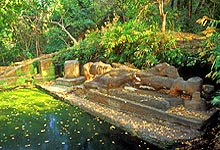 |
|
Its fauna is very rich. One counts there nearly 200 species of birds, many deer tribes, reptiles as well as dholes, wolves, monkeys (very many), bears lippus, leopards and tigers.
The population of tigers in Bandhavgarh has a density raised.
The poaching almost disappeared, mainly thanks to the action of associations which work on ground. Those refund the losses of cattle had with the attacks of big cats, equip the guards, collect information on the traffics, and help locally human populations in their hard living conditions.
At the end of 2006, Tala arranges has 26 tigers.
Those are descendants of famous Charger and Sita.
There are currently 2 dominant males, Dithoo, 10 years, and Rajbhera, 7 years.
The bearing tigress name Amanala, Chakradhara, Jhurjhura, Churbara and Shuki-Pati.
Amanala and Chakradhara are remarkable mothers, because 10 years old, they already had respectively 14 and 12 small cubs.
Bandhavgarh is the best place in the world to see wild tigers,
but the observation is “very tourist”.
|
|
|
|
|
|
|
The Bandipur Tiger Reserve is located in the state of Karnataka. It covers 874 km2 but only 80 km2 are open to tourism. Since the departure of humans, vegetation is regenerated. The landscapes are sometimes typical of this park, such as short stretches of grass dotted with giganstesques bamboo. There are also many points of water.
The system of two monsoons that the park is well watered and very green.
Elephants are numerous and all Indian wildlife is present.
Bandipur is famous for its troops of dholes, who have more members than elsewhere. The tigers are still present, are difficult to see.
|
|
 |
|
In the past, Bandipur was famous for its poaching and most notorious Veerepan. He has killed hundreds of tigers during years. True gansgter, he had attack the tourists. He was shot by guards after killing several.
|
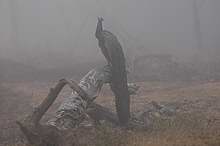 |
|
The early morning safari have a ghostly touch that I appreciate very much.
The morning mist envelope the landscape unreal. We try to guess the forms that we glimpse while hoping the most anticipated of all: the tiger.
|
This national park is inhabited by humans for decades, but they pursue a great pressure on a third of the park where cattle will graze. These areas are not visited by tourists. A main road through the park pins is the dead animals (leopards, tigers and others).
Bandipur is a major park in the south. The space is airy, without the observations to be easy. The habitat is preserved and there are few tourists.
|
|
|
|
|
|
|
At the XIXe century, deforestation for the industry of wood and agriculture, had strongly degraded Corbett. Protection measures of this place were taken and later, at the beginning of the XXe century, one considered the idea of a sanctuary of fauna. Unfortunately, that was rejected because tiger's hunting was very appraisal by rich middle-class in evil of feelings.
|
In 1936, the 1st Indian national park was created (National Hailey park); it was renamed in 1954 (National Ramganga park), and took finally it name of national park of Corbett in1956.
Corbett was a hunter, naturalist, writer and photographer who contributed much to safeguarding of this place.
|
|
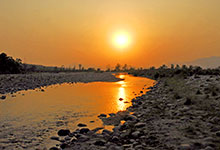 |
|
The park of Corbett was one of the first reserves to be taken part in the tiger Project.
It was increased in 1991 with the addition of Sonanadi Wildlife Sanctuary.
(map attached) The surface of conservation has 520 km2, the buffer zone 797 km2.
The park, located on chains mountainous, is crossed by the Ramganga river which finishes its race in a lake created in 1970. That has absorbed 10% of the surface of Corbett.
The reliefs of Corbett accomodate one abundant vegetation and animals into large
numbers. One still finds Indian elephants there, and rare the gavial (crocodile with the lengthened muzzle).
Practically all animals of fauna Indian are represented there.
The population of tigers is rather numerous, in glance of the other places of the surface of tiger's distribution.
|
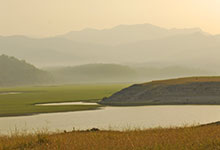 |
|
The safaris are done in the jeep or with back
of elephant. Accesses of the Ramganga river
are privileged places of observation.
But the ultimate pleasure is to be able to remain inside the park, in Dikhala.
One is then immersed in a magic, marvellous world of sounds and of environments.
With the shade of the tiger which rôde…
|
Corbett is a splendid park with environment extraordinary.
It is one of the rare places where the tiger has chances to survive in the years to come. To visit absolutely.
|
|
|
|
|
|
|
GIR National Park, located in Gujarat, spread over 258 km2 included in a complex protected a total area of 1412 km2.
The uniqueness of this park is that it has the world's last population of Asiatic lion, once widespread. The lions of Asia are the ancestors of African lions. A Gir, the last census recorded 359 lions.
To protect this unique and fragile species, scientists have tried to get some couples to establish a new population of lions on another site outside of Gujarat.
Gujarat is very jealous of its privilege, has always declined the requests of its neighbors.
|
|
 |
|
Besides the lions, it should be noted that the leopards are very present and it is not uncommon to see them.
The Maldaris a population of shepherds living inside the park in a peaceful coexistence with the lions. This tribe has doubled its population and this poses problems in this overcrowding.
The Gir park is well protected from poachers. Yet in recent years, the number of lions killed increases. The reason is simple: the bones of lions are identical to those of tigers and as they are increasingly rare …
Gir, with good management and with guides to quality, well worth the detour required by his position in western Gujarat.
|
|
|
|
|
|
|
Kaziranga is the pearl of the parks of Assam, located in the Mikkir Mountain on the south bank of the river Bramapouthre. It is a success story for conservation.
In the 19th century, this place was a hunting reserve and one of Rajas had killed 97 rhinos in a month. In 1908 there recensa 12 rhinos survivors.
Therefore, solutions were taken and Kaziranga was closed to the public until 1938.
He later became a national park in 1974.
|
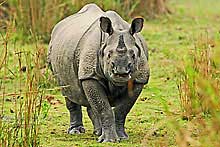 |
|
Since then, through adequate measures, the 472 km2 of the park are home of the largest unicornes rhinos population in the world and Kaziranga is renowned for that.
It is the sanctuary of rhinos 1200, which went very close to extinction.
|
The region of Assam is outside the conventional tourist paths. What it guarantees, in part to keep a wilderness.
Unlike other national parks, the vegetation consists mainly of large grassy areas where herbivores move in small groups.
|
|
 |
|
The rhino is staying in the marshes which is the habitat of water buffalo.
It is still under braconnages, but effective action of dedicated guardians has hurt the number of rhinos killed for their horns.
It can be approached within a short distance backs of elephants.
There are elephant, barashingha, deer-pig, among others, and a large birds along the river.
The large predators like leopards and bears are present, and a good population of tigers. But the latest census shows a drop in the number of striped felines.
The Kaziranga National Park should be appointed Tiger Reserve in 2008.
Kaziranga is a place full of calm. Here you can see the very rare and beautiful rhinos unicorne in magnificent scenery of meadows, bordered by the beautiful forests along the mythical river Bramapoutra.
|
|
|
|
|
|
|
This park is located on the Mekal mounts at Satpura, in the state of Madhya Pradesh.
It was created to save one cervidé rare, the stag of Duvaucel (barasingha).
This declared reserve national park in 1955, was extended by the addition of the valleys of Banjar and Halon. (see map)
In 1973, it becomes 1st Tiger reserve of the Project Tiger. Its surface is of 1945 km2 including 940 km2 for the principal surface. With proximity, PhenWildlife Sanctuary, of a surface of 110 km2, allows one exchange genetic between 2 spaces.
The park of Khana was formerly occupied by tribes, whose 27 villages were rebuilt outside.
The meadows recolonisés these sites forsaken. Since, the chitals and other deer tribe have
replaced the human ones.
|
The broad surface of Khana proposes large
diversity of landscapes but more than all, forests offer an imposing decoration.
The incredible diversity of the banian trees several times centenaries, make this place a magic place and there is no doubt that one is well in the middle of the jungle book.
|
|
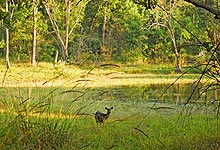 |
|
In such an environment, fauna can be only very rich. One counts there nearly 200 to 300 species birds, deer tribes, gaurs, reptiles, dholes, wolves, sloth bears, jackals, leopards and tigers.
|
 |
|
The population of tigers with Khana is in good health. It profits from a scientific follow-up since years, particularly since work of
George Schaller.
Maintenance and the monitoring are well carried out. The formation of the guides is good and their knowledge of fauna is invaluable.
|
The whole of the park has 110 tigers, a hundred leopards, 400 barasinghas, 1200 gaurs.
The principal family of tigers is that of Urmapanee, whose territory is established in Koila Bhatta and in Khana meadow. Vision of the tigers in Khana is frequent, although the distance of observation is rather large, partly because size of the place.
With my opinion,
Khana is the most beautiful Indian park, with magical environment of its forests
|
|
|
|
|
|
|
The Manas Tiger Reserve is located in Assam. It extends over 500 km2 within the limits of the national park (2840 km2). This is extended to the other side of the river Manas, in Bhutan, with 1000 km2 of Royal Bhutan National Park.
Formerly hunting reserve for the royal families of Cooch-Behar and Gauripur, varied and typical habitat of Manas him to be part of the World heritage site. Mothanguri, bathed in the river Manas is dominated by wooded hills of thousands of trees "semul" to the pretty red flowers, which bloom in March.
|
In these places there is a twenty highly endangered animals. There is (was) of rare species such as the golden langur, discovered in 1953.
Tiger's census gave 89 individuals.
The clouded leopard was present and the red panda also.
|
|
 |
|
Unfortunately, years of occupation by armed troops and rebels have decimated animal populations and it is difficult to describe the remaining species.
The tigers, probably very few have subsisted. Their preys, deers, have also largely been poached.
Yet space is important, and the forest seems in good condition. But the prairies are gradually invaded by the cows, poachers are very active ... and tea plantations are in constant expansion. Nevertheless, a programme of reintroducing the rhino is underway.
Manas is now a park emptied of its once rich wildlife.
Tourists who will be going, will be disappointed.
|
|
|
|
|
|
|
Mudummalai, located north of Tamil Nadu covers an area of 380 km2.The recent notification of the Wildlife Sanctuary as a Tiger Reserve will surely give him a boom that will benefit him.
|
 |
|
Together with Bandipur which extends north and Wyanad, Mudumalai offers a beautiful space for the movement of elephants and other animals.
The park is surrounded by many coffee plantations, which have reduced the forest area, still retain some trees needed to provide shade to the crop.
|
Safaris in the park are on a restricted surface aboard canters.
The animal featured is the giant Malabar squirrel, but the species are numerous.
The number of tigers that was communicated to me on place is 37 (2010).
Although trees, Mudumalai is a forest of choices throughout the greenery of Western Ghats. For photographers the flat is canters.
|
|
|
|
|
|
|
Nagarhole is a national park in 1988 and a Tiger reserve in 1999. Its 640 km2 of forests are intact. It is separated from the Bandipur by Kabini River. To preserve the natural behavior of wildlife, one third of the Nagarhole surface is prohibited tourism and forest management.
|
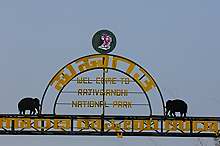 |
|
Nagarhole, also known as Rajiv Ganghi, has a population of elephants in good health. The forests are home to many predators.
The park benefits from scientific work followed. Ullas Karanth is famous for his long study on tigers.
|
Kabini Lake is a crucial water supply for the life that revolves around the lake (plant, animal and human).
The deer and elephants gather in large numbers on its banks.
|
|
 |
|
The park has recently received a major expansion of its surface with the addition of the Kabini area. This is exploited for tourism.
Nagarhole forests intact and represents a significant territory for the future of tiger. Bit of promotion, few tourists and a nature preserved.
|
|
|
|
|
|
|
In the state of Assam, Nameri was a "reserved forest" in the 19th century.
It becomes "Nameri sanctuary" in 1985, then a national park in 1998, and Tiger reserve in 2000.
The surface of the park is 200 km2. The northern border of Nameri joined the Pakhui Wildlife sanctuary and together they constitute an area of 1000 km2 of forests, bamboo and meadows along the rivers. In this habitat preserved, there is a wide variety of animals.
Nameri Park is not well known. It is visited mainly for its birds that can be seen down the river.
|
|
|
|
|
|
|
Panna, located in northern Maddhya Praddesh, an area of 543 km2, is national park since 1981 and Tiger reserve since 1994. Its proximity Khajurao, famous for its temples, made a stop for nature lovers.
|
 |
|
The topography of the reserve is characterized by extensive plateaus and gorges. Multiple streams feed the life within the park.
On the edge of it, you can go boating on the river Ken along the reserve. The bird life is multiple.
|
Panna Park is dotted with ancient archaeological remains. The fauna is numerous and varied landscapes in different and sometimes grandiose. Several villages were relocated after the scandal that followed the poaching of 32 tigers in the park. Since 2009, three tigress and a tiger were brought from Bandhavgarh, Kanha and Pench. Females have given baissance to small cubs. The reintroduction is a success.
Panna has everything to attract nature lovers. However, few tourists because of its small population of tigers.
|
|
|
|
|
|
|
Located in the Western Ghats in southern India, forests of Parambikulam have long been exploited for teak. The planting of this tree has spread over 60 years, destroying a beautiful forest. Teak does not allow any other plants nearby. In 1983, Parambikulam was notified as a sanctuary after stopping the exploitation of teak. Currently the area is 285 km2. In early 2011, has just been declared Tiger reserve.
|
The vegetation of the reserve is still green. Some portions are planted with teak, but fortunately most varied and show the forests dense. The management of the park is intelligent. It involves the population of the villagers who live on site in small numbers. They are employed as guards, others to clean up the trails, watch wildlife, etc ...
|
|
 |
|
The abundant population of herbivores present in the sanctuary can hold significant numbers of predators such as tigers and leopards. Parakikulam is known for its gaur, Nilgiri langur and its Lion tailed macaques. For birds, 268 species including 134 rare, were identified.
Parambikulam has possibility of accommodation inside the forest.
Good management of the clean park and little used attracts tourists and hikers looking for authenticity in peace.
|
|
|
|
|
|
|
The tiger's reserve of Pench is divided into 2 parts. Most important is located at Madhya Pradesh with a surface of 757 km2, the other with Maharashtra with 257 km2. It was declared like 19th Tiger reserve in 1992 and the 2 parts are managed separately. The name of the reserve comes from the name of the Pench river.
|
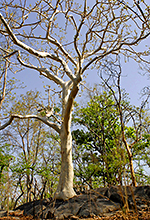 |
|
The landscapes are covered by a mixed forest and some old teak plantations.
Many small brooks traverse the park and an artificial tank, became one important point of observation.
A good network of forest roads, returns easy the access to the various zones.
The Gonds tribes were the principal ones occupants of the park. Negative impact of their agriculture required the starting of one project in order to allow these villagers
to develop their own resources and to reduce their dependence to the forest.
|
Indian fauna is well represented. One can to see beautiful herds of gaurs and muntjac
appreciate the thick forests of the park.
Carnivores, leopards, dholes, jackals, hyenas striped and tigers occupy all good
place in the ecosystem. Avian fauna includes 200 species.
This park is of relatively modest size, if one considers just the part Madhya Pradesh.
It is indeed which is visited. The other part, smaller, seems less protected.
Pench, now, is a very tourist park, had with its proximity with Nagpur.
The great number of Indians visiting with theirs personal vehicles, far from respectful of nature, and coming here as they goes in one amusement park, makes that I do not advise this park.
|
|
|
|
|
|
|
The 392 km2 of Ranthambore National Park, as well as Kaila Devi Wildlife Sanctuary and a few pockets of forests are the 1334 Km2 of the Ranthambore Tiger Reserve.
The many strengths and palace ruins bear testimony to a grand historical past.
The appearance of the park is made up of lakes and streams, which most are dry most of the year. The dry forests of dhok, ber and ronj dominate the park while still growing green can be seen in a few valleys and along the streams.
|
Bakaula, Lakarda, Nal Ghati, Semli, Anantpura et Kachida are places known for observing wildlife.
The lakes Padam Talao, Raj Bagh and Milak Talao are essential for the animals and their visitors.
These are the high points of "sightings" of tigers, some of which are world famous.
|
|
 |
|
While crocodiles take the sun, sambars, chitals, chinkaras and nilgais can be seen easily. Bird species are very diverse and parrots and kingfishers are in great number.
Despite this rosy picture, the population of tigers is one of the most low in the history of the park, currently with 32 individuals (against 44 to 46 years for 90)
|
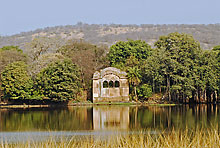 |
|
The biggest problems in the park are poaching, overgrazing (allowed from June 15 to September 15 !!!), water shortages and fires forests. The pressure of tourism is the price of the international reputation of Ranthambore .
The authorities are trying to find adequate solutions to all these problems. |
For observations of tigers in the best conditions,
Ranthambore is one of the parks where it is easier to see tigers.
The sets consist of lakes and palaces give a scenic vision,
unique in the world.
|
|
|
|
|
|
|
The Sariska Tiger Reserve is located in the district of Alwar in Rajasthan. Its surface is 866 km2, consisting mainly of dry forest on land barren and rocky. The vegetation is typical in some places.
Like many parks, Sarika was once a hunting reserve for the Maharajas. Here that of Alwar. The hunting was said to be very successful.
All species are found here. Peacocks and nilgaults are over-represented.
|
How not to mention the tragedy in year 2005, 24 tigers of Sariska killed with the complicity of some officials and park rangers ...
Since an effort is made to reintroduce the tigers that once a livelihood for tens thousands of people, ...
|
|
 |
|
In 04/2011, there are two males tigers and three tigress (all brought from Ranthambore). In 2011, there has still been no births. The authorities have relocated two of four villages with problems. Remains the road through the reserve.
One of the problems of Sariska is its location on the Aravalli hills, rich in minerals. Mining, authorized or not, is a huge problem. The large number of villagers living in the park is another. Then, the challenge of restoring a fully poached tiger population is not a small problem. Finally, the protection of all will be difficult because near Jaipur, location of several known smugglers, and a mining mafia.
Sariska is trying to recover from the tragedy. To his credit, this park has a good density of prey with a tourism less present than in the past.
|
|
|
|
|
|
|
Tadoba National Park is located in Chandrapur district in northeastern Maharashtra. Created in 1955 with a suface of 116 km2, and increased with the 508 km2 of the sanctuary of wild life Andhrani, Tadoba park is called "the jewel of Vidharba.
This reserve has developed an innovative system of protection with the help of villagers. These volunteers are recruited for 3 months with subsidies, after 3 months, new volunteers are recruited because the families of 6 villages can benefit from the aid and be involved in protection
|
 |
|
The park has several areas with very different habitats.
A very large lake is populated by many birds that find food and crocodiles are present.
|
| Several meadows allow herbivores to grow. Chitals occupy these places.
Gaurs are easily visible in Tadoba and I was surprised by sambars no shy.
|
|
 |
|
Tigers and leopards are found in large numbers. The sighting of tigers is assured as long as it spends a few days. Well often alone, unlike other places. This park has many sloth bears and a large population of wild dogs.
Tadoba is unknown to the public. Less prestigious and less frequent than its neighbors, it has kept its authenticity.
|
|
|
|
|
|
|
In the state of Kerala, Wyanad is a wildlife sanctuary since 1973. At that time, 345 km2 was under the protection of WS. In 1992, he participates in the Elephant Project.
The forest area is now broken into two parts: the northern and southern zone.
The central area which was originally a forest, was demolished to make way for cultures and plantations.
Wyanad is unknown in the West. The sanctuary covers only part of a larger forest complex. The southern area is visible to tourists (part only). The northern zone, most dense and savage is not seen.
|
|
|
|
|

